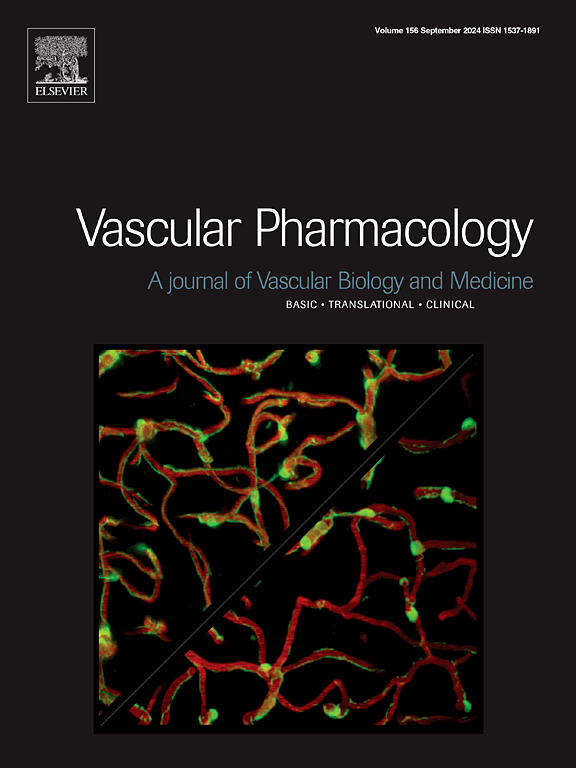利用细胞模型和 omics 技术揭示动脉粥样硬化的分子机制。
IF 3.5
3区 医学
Q2 PHARMACOLOGY & PHARMACY
引用次数: 0
摘要
尽管发现了包括他汀类药物和PCSK9抑制剂在内的有效降脂疗法并广泛应用于临床,但动脉粥样硬化引起的心血管疾病(CVD)仍然是一个巨大的未满足的临床需求,在世界范围内造成了频繁的死亡。动脉粥样硬化的发病机制是一个复杂的过程,存在可改变和不可改变的危险因素,影响几种细胞类型,包括内皮细胞(ECs)、单核细胞/巨噬细胞、平滑肌细胞(SMCs)和T细胞。斑块的不均匀组成及其形态可能导致破裂或侵蚀,引起血栓形成,甚至猝死。为了破译这种复杂性,各种细胞模型系统已经被开发出来。随着系统生物学方法和单组学或多组学方法的最新进展,研究人员可以阐明特定的细胞类型、分子和信号通路,这些细胞类型、分子和信号通路与疾病进展的某些阶段有关。与动物相比,体外模型经济,易于调整以进行高通量工作,并提供机制见解。因此,我们回顾了利用动脉粥样硬化细胞模型产生各种组学数据的最新工作。我们总结了他们的产出和他们在该领域的影响。从细胞模型中获得的组学数据的可翻译性的挑战将与未来的观点一起讨论。本文章由计算机程序翻译,如有差异,请以英文原文为准。

Unravelling molecular mechanisms in atherosclerosis using cellular models and omics technologies
Despite the discovery and prevalent clinical use of potent lipid-lowering therapies, including statins and PCSK9 inhibitors, cardiovascular diseases (CVD) caused by atherosclerosis remain a large unmet clinical need, accounting for frequent deaths worldwide. The pathogenesis of atherosclerosis is a complex process underlying the presence of modifiable and non-modifiable risk factors affecting several cell types including endothelial cells (ECs), monocytes/macrophages, smooth muscle cells (SMCs) and T cells. Heterogeneous composition of the plaque and its morphology could lead to rupture or erosion causing thrombosis, even a sudden death. To decipher this complexity, various cell model systems have been developed. With recent advances in systems biology approaches and single or multi-omics methods researchers can elucidate specific cell types, molecules and signalling pathways contributing to certain stages of disease progression. Compared with animals, in vitro models are economical, easily adjusted for high-throughput work, offering mechanistic insights. Hereby, we review the latest work performed employing the cellular models of atherosclerosis to generate a variety of omics data. We summarize their outputs and the impact they had in the field. Challenges in the translatability of the omics data obtained from the cell models will be discussed along with future perspectives.
求助全文
通过发布文献求助,成功后即可免费获取论文全文。
去求助
来源期刊

Vascular pharmacology
医学-药学
CiteScore
6.60
自引率
2.50%
发文量
153
审稿时长
31 days
期刊介绍:
Vascular Pharmacology publishes papers, which contains results of all aspects of biology and pharmacology of the vascular system.
Papers are encouraged in basic, translational and clinical aspects of Vascular Biology and Pharmacology, utilizing approaches ranging from molecular biology to integrative physiology. All papers are in English.
The Journal publishes review articles which include vascular aspects of thrombosis, inflammation, cell signalling, atherosclerosis, and lipid metabolism.
 求助内容:
求助内容: 应助结果提醒方式:
应助结果提醒方式:


